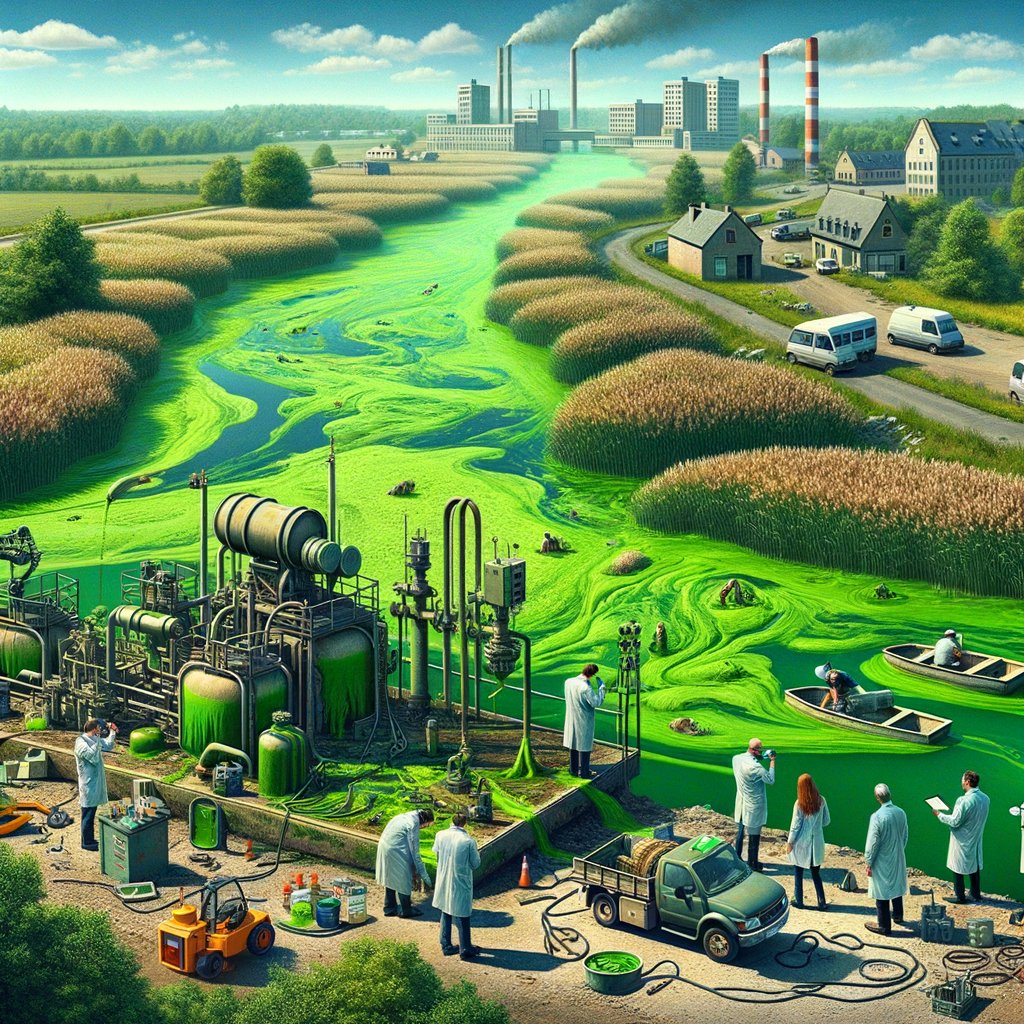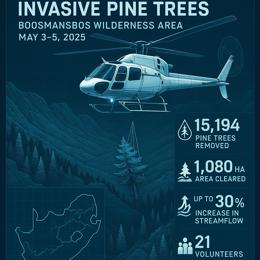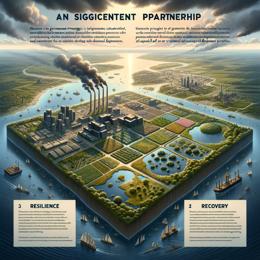Image created by AI
Environmental Alarm as Hennops River Turns Green with Toxic Algae
Tshwane's Hennops River, once a vibrant part of the Gauteng landscape, now paints a dire picture of environmental distress. Recent observations have revealed that a significant stretch of the river has turned green due to the proliferation of algal blooms, a condition exacerbated by the combination of agricultural runoff and inadequate waste management.
Local environmentalist Tarryn Johnston, who is at the forefront with the Hennops Revival and Deep Water Movement, highlighted the sequence of events leading to this ecological anomaly. Following recent floods, a surge of pollutants, including nitrates, phosphates, and other agricultural byproducts, were washed into the river, intensifying the existing pollution load. The presence of these nutrients in the water has created an ideal breeding ground for cyanobacteria, commonly known as blue-green algae.
Scientific insights from the Council for Scientific and Industrial Research (CSIR) support Johnston’s observations. They explain how the excessive nutrient levels in rivers lead to eutrophication, a process resulting in dense algal blooms that not only discolor the water but also diminish its quality and destroy aquatic ecosystems.
Despite the glaring signs of degradation, the response from local authorities has been lackluster at best. Efforts to engage the City of Tshwane and the Department of Water and Sanitation have yielded little action, as confirmed by their non-responsiveness to queries regarding the situation.
However, not all responses have been passive. In June 2024, a memorandum of understanding was signed between the City of Tshwane and the Department of Water and Sanitation, aiming to tackle the key issues of pollution control and infrastructure enhancement in the area. Dr. Risimati Mathye pointed out that aging water treatment facilities are a significant part of the problem, emphasizing the need for urgent upgrades and effective maintenance.
Moreover, Dr. Mandla Mathebula from the Department of Water and Sanitation has shed light on the multi-dimensional nature of the pollution, which not only stems from agricultural activities but is also significantly contributed to by the surrounding informal settlements. These areas, often lacking basic sanitation and waste management services, inadvertently exacerbate the river's pollution through uncontrolled runoff.
The situation poses grave health risks, as noted by environmental experts and health officials. Contact with water harboring cyanobacteria can lead to serious health issues, both through direct contact and through the consumption of contaminated water. Recognizing this, authorities strongly discourage engaging in water-related activities in the river.
In response to this ongoing crisis, local NGOs like the Fountain Rivers Earth Sanctuary Hennops are pushing for innovative solutions such as the replacement of certain infrastructure with biological systems like reed-bed filters. These natural filters could significantly reduce pollutants and restrain the growth of harmful algae.
The transformation of the Hennops River into a green swath is a glaring indicator of broader environmental challenges facing the region. It underscores the urgent need for cohesive and effective management strategies that encompass both pollution control and community education on environmental stewardship.










